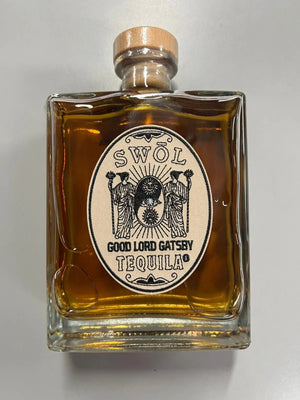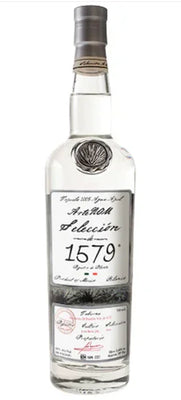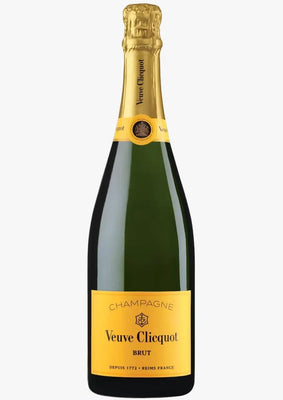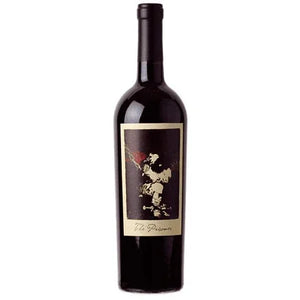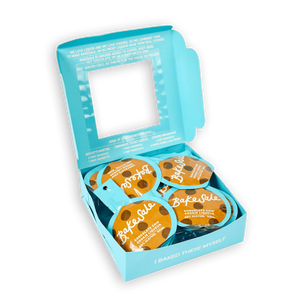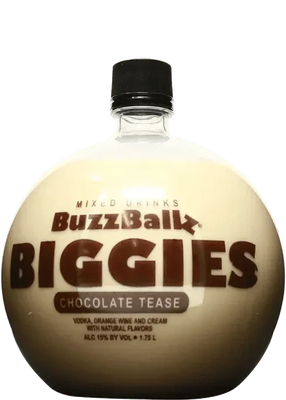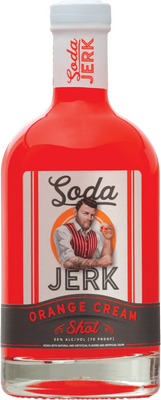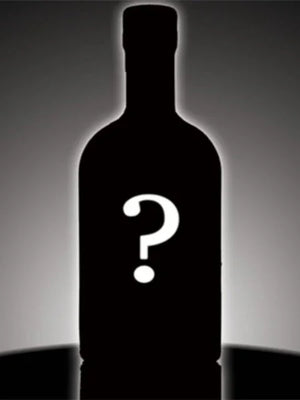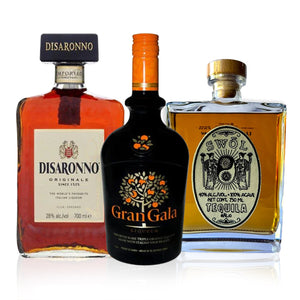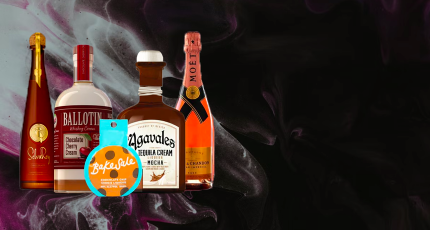The Oldest Spirits in the World
Before we get too far into this little history lesson, we’ll need to deal with the notion of an “old spirit.” There are two different lists of old spirit in this article. The first is, honestly, a little more interesting. In that one, we’ll have a look at some of the historically oldest spirits in the world.
Most are no longer made, though many have tried the ancient recipes that have come down to contemporary drinkers. And while the idea of fermentation stretches back farther than you might imagine, the spirits brewed by our ancestors bore little resemblance to the fancy bottles and imaginative flavorings of today’s alcohol.
The second list, an aged spirits list, is a brief look at some of the most-aged spirits that are available for us to buy either in person or online. Be warned: the older a bottle of liquor gets, the more expensive it gets. Unless you’ve been saving for a while, or have an unexpected windfall, these bottles may be out of your range.
Alcohol and Ancient History
Try to guess how long human beings have been making potions that will get them drunk? Depending on your perspective on humanity, what you discover on this aged spirits list is either going to be a lot longer than you thought or won’t be surprising at all!
Poitín - 6th Century CE
Poitín, pronounced “put-cheen,” is an Irish concoction thought to be the oldest spirit in the world. A spirit, or liquor, is an alcohol that has been both fermented and distilled. Popular examples include gin, whisky, and vodka. While some of the beverages on this list are far older than Poitín, none of them are distilled. Is it surprising that a homemade distillation that is relatively close to whisky has been subversively made in Ireland for 15 centuries?
And, unlike a lot of the ancient brews on the list, Poitín is available to purchase. At least one distillery, Mad March Hare, offers the ancient Irish brew for sale.
Cacao Wine - c. 1400 BCE

At 1500 years old, the above Poitín is the baby of the group. The next beverage on our ancient list is a full 2000 years older than the bootlegged Irish concoction. Cacao is the same plant from which we get chocolate. Early agricultural practices with cacao fruit led to the discovery of its alcoholic properties after fermentation.
Cacao was seen as such a valuable commodity that the beans themselves were used as currency in the Aztec empire. As such, cacao wine was a mark of wealth and status. It was primarily used in religious or cultural ceremonies, and was not a respite for the general populace, as alcohol would one day become.
Ninkasi Beer - c. 1800 BCE
400 years earlier, and halfway around the world, a hymn to the Sumerian Goddess of Alcohol, Ninkasi, contains the first recorded recipe for beer. Both the brewing and consumption of beer were sacred activities in the worship of Ninkasi. Supplicants would visit her temples in order to gain blessings on both their brewing and the eventual beverage.
Babylonian Beer - c. 2700 BCE
Not to be outdone by their Middle Eastern ancestors, the ancient Babylonians also had a proud tradition of brewing and drinking beer. One of the earliest written records, the Code of Hammurabi, outlines the rules and laws associated with brewing and drinking beer.
Hammurabi’s Code is a set of laws introduced by the famous king. Among the legal precedents first set down almost 5000 years ago is the earliest example of considering an accused person innocent until proven guilty, a backbone of many worldwide judicial systems to this very day!
Egyptian Herbal Wine - c. 3150 BCE

It’s only relatively recently in the history of alcohol that any of the fermented or distilled beverages became recreational libations.For the vast majority of its history, alcohol has been used medicinally. Tomb decorations show ancient Egyptians using herbs and tree saps mixed with beer or wine to create herbal medicines.
The tomb of Scorpion I,one of the first rulers of Ancient Egypt, contained over 700 jars that contained dried traces of tartrate. This substance is a primary chemical in wine and other grape products. Chemical analysis of the residue appears to support the pictorial evidence for ancient Egyptian wine-making.
Chinese Fermented Beverage - c. 7000 BCE
We’re going to make quite another jump in time, almost 3000 years. Though numerous alcoholic beverages appeared in the intervening time, our space in this list of aged spirits is not quite as long. Indian Mead (6000 years ago) and Georgian Wine (8000 years ago) fall in this gap, but none of them are quite as old as the almost 9000-year-old alcoholic remnants found in Jiahu, China.
Analysis of 16 different clay vessels shows that the ancient wine was likely created with “rice, honey, and hawthorn fruti [sic]/and or grape.” These residues make the Chinese “wine” the oldest alcoholic beverage in the world with actual, physical evidence. How’s that for an old spirit?
Alcohol and Recent History
While the above alcoholic beverages are of historical interest, most people who are reading about alcohol online would probably like even the slimmest chance of trying the drinks they peruse. Some of the ancient recipes have been tried out, but you aren’t likely to find a bottle of 9000-year-old Chinese wine on your liquor store shelf, virtual or otherwise.
That said, the bottles in this list of aged spirits are not exactly easy to come by. These are the oldest, in that they’ve been aged the longest, spirits in the world that are still, to some, available to purchase. While some of them may make your mouth water or pique your interest, unless you’re fabulously wealthy these may be as out of reach as the beverages lost to 9000 years of time.
The Last Drop 1971 - 50 Years
The Last Drop distillery was founded less than 20 years ago, but already they have made waves in the world of premium whisky. The blend of “over 40 single malt and grain whiskies” commands a startling $3,200+ per bottle. Last Drop 1971 is considered “triple-matured,” having been aged after initial distillation, with the post-bottling remainder aged another 9 years, then blended again and aged 24 years. The final version of the blend hit the market in 2017.
Jaime 1 - 30 Years

This aged alcohol is a brandy, one of a broad category of fruit-based beverages. The bottle is named for Jaime Torres, the founder of Bodegas Torres. The Torres family has been making wine in Spain for five generations. A bottle of this premium brandy will run you between $80-$90 US.
The Jaime 1 comes in a bottle “inspired by Gaudí architecture in Barcelona,” and has been aged for up to 30 years. The process of creating the Jaime 1 involves mixing differently-aged barrels of brandy. This allows for a “well-rounded flavor profile,” as well as taking into account the evaporated portion of the liquid, or the “angel’s share.”
Hannisville Rye Whisky - 154 Years
The “Hannisville Cache” is a discovery of whisky that is thought to have been distilled around 1863. The original distillers went out of business during the years of Prohibition in the United States, and the remaining whisky was bought by an ambassador to the Court of Saint James. After keeping the whisky as a “family heirloom” for some years, the owners decided to bottle and sell small amounts.
Sadly, it seems this rare, pre-Prohibition liquor is sold out just about everywhere. A small, 200 mL bottle cost £135 a few years ago. If you can find this old and apparently excellent liquor, don’t think twice.
Reserva de la Familia Serrallés - 20 Years
On a list of aged spirits, 20 years might not seem like a long time, especially when compared to the Hannisville whisky above. But Reserva de la Familia Serrallés is a rum, and rums don’t tend to need a lot of aging. Or rather, the climate within which the rum is being aged means that it ages somewhat differently than other alcohols in other climates.
Rum maker Roberto Serrallés elaborates: “...age in spirits can be thought of as a relative term…A spirit aged in Scotland…experiences cold temperatures and high humidity,” and so ages more slowly than rum aged in Puerto Rico. Serrallés jokes that their rums mature in “dog years; every calendar year in Scotland means like 7 years in Puerto Rico.”
One last thing: though not aged nearly as long as some of the whiskies on this list, this super-premium rum will set you back close to $1900 US.
From the evidence presented in the archeological record, human beings have been drinking alcohol for almost as long as we have been building cities and erecting civilizations. While these beverages may have started as medicines (and some still have some medicinal qualities), once recreational use of alcohol became popular, the innovations in brewing and distilling came hard and fast.
With the liquors on our lists here, the currently-produced alcohols may be less-accessible than the ancient drinks we first addressed. The reason for this is that the recipes for many of these ancient beverages are available for amateurs to try - and it’s a good bet that brewing yourself some 6th century CE beer will cost significantly less than that 20-year-old bottle of rum we just discussed.
Brandy is a distilled spirit made from fermented fruit juice, often aged in oak barrels for added depth and flavor.


